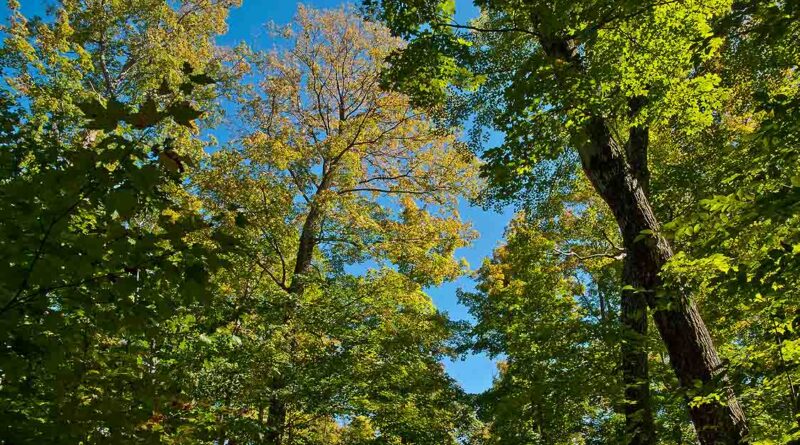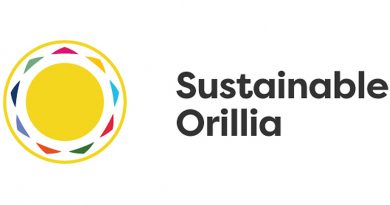Biodiversity: Variety is the Spice And Source of Sustainable Life
By Fred Larsen – Special to SUNonline/Orillia
The study of genetics originated almost 200 years ago when an Augustine Friar, Gregor Johann Mendel, began studying the inherited characteristics of the Abbey’s garden plants. As the publication of Darwin’s theory of biological evolution in 1859 gained momentum; plant and animal life were classified into groups, or species, based on their shared characteristics. From these beginnings our present-day understanding of genetics and biodiversity has emerged. The word biodiversity refers to the variety of life in the world, or the variety in a particular habitat or ecosystem. Biodiversity occurs within species as well as between species. We have come to understand biodiversity makes our environment stronger and is essential to the health of our way of life.
Today there is lots of online literature for those interested in learning more about biodiversity. Our goal at Sustainable Orillia is to boil it down into practical information, to talk about it and about why it’s important in terms of our neighbouring forests, our city streets, parks and backyards. Although our focus over the past month or two has been mainly on trees, biodiversity refers to all species within an ecosystem.
Here in Simcoe North we occupy a unique habitat that runs between two major ecozones: the Precambrian Shield to the north and the richer, tillable, morainal deposits to the south. As a consequence, we enjoy an uncommonly high degree of biodiversity with an abundance of forested land throughout our region.
Having a variety of trees throughout our wooded areas supports functioning ecosystems which include other plant life, insects and animals – all of whom are interdependent in nature’s grand scheme. If genetic tree diversity were to be lost, other species specifically associated with certain trees may also disappear, leaving the whole forest ecosystem biologically impoverished and more vulnerable to collapse.

We often see large lots with long rows of softwood trees – pines, for example – all being cultivated specifically for lumber or paper products. A quick look at these lots confirms that a single species environment doesn’t support much undergrowth or plant life across the woodlot floor. These lots are managed professionally, of course. In the wild, a similar single-species stand of trees would be quite susceptible to disease and/or insect infestation and may struggle to survive.
Many articles speak about how trees provide oxygen, habitat, fuel, shade and other essential benefits for our survival and quality of life on the planet. There are 3.4 trillion trees in the world (give or take) and just over 60,000 species. Thanks to good forest management in several countries, the overall number of trees has been relatively stable for the past 100 years, particularly in the developed world. However, the number will decline if we don’t work with developing countries to find alternatives to cutting down or burning rain forests or burning trees for charcoal – and if we don’t keep planting more trees.
Deforestation continues in many places and the distribution of tree density around the world is vastly uneven, which is a concern. Not surprisingly, in Canada we have one of the highest ratios of trees per person, an estimated 8,953 trees per Canadian for a total of 318 billion trees overall. In contrast, in countries like Egypt there is an estimated one tree per person. Some studies estimate without world-wide reforestation initiatives by 2050 we could lose over 1 million square miles of forest due to deforestation and the total number of trees could fall closer to two trillion. Thankfully, world-wide, there have been huge tree-planting initiatives over the past few years which have added millions of new trees. Planting more trees than we harvest is key.
Trees are the ultimate carbon storage machines. “Woodlands and forests can lock up carbon for centuries – which is something humans and the planet desperately need them for, given the damage done to the atmosphere by carbon-emitting human activity,” said Helen Lock in Global Citizen. According to the Woodland Trust, a UK conservation charity, “400 tons of carbon can be locked into one hectare (which is 10,000 square meters, or about two and half football fields) of woodland alone.”
Bringing it back home, here are a few actions we can take to support greater biodiversity on our own land and in the community:
- Explore all options and consult an arborist before removing any tree on your property. If you do have to remove a tree, be sure to plant another one, or maybe two, to replace it as soon as possible.
- When planting trees, select varieties native to our area. There are several.
- Question or challenge residential development plans that could destroy habitats of species at risk in our area.
Visit Sustainable Orillia’s Youth Council page where you will find the Tree Identification Tool developed by our Youth Council in 2020.
This is one of the last articles in our series, “Trees – Our Sustainable Partners.” It’s been inspiring to discover so many ways that trees support our lives on this planet. In Canada, there are about 140 species of native trees, many of which are found here in Ontario. With this broad menu of native variety, plus ongoing forest management and growing awareness of how human intervention can either undermine or promote biodiversity, we are in a good position to ensure strong, healthy forests, urban and otherwise, for generations to come.
(Photos by Swartz – SUNonline/Orillia)



